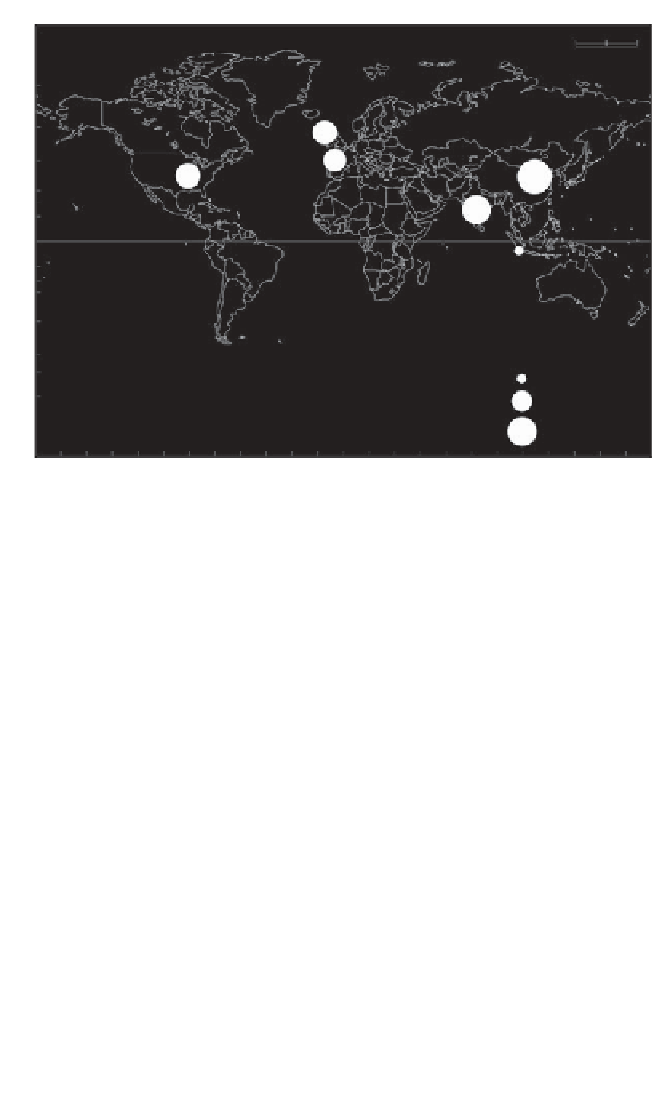Geography Reference
In-Depth Information
0
2000
Km
4000
Scale at the equator
60º
669
UK
582
FRANCE
732
USA
1378
CHINA
30º
981
INDIA
0º
93
INDONESIA
30º
60º
100
500
1000
Inward FDI Projects by Country
180º
90º
0º
90º
180º
Source
: Arita et al. 2011.
Figure 8.1
The number of greenfield inward FDI projects by country in
2005
and even more than Hong Kong and Singapore or China (UNCTAD
2007).
These observations all point to the current dominance of greenfield
modes of FDI in developing and transition economies. In these countries
inward FDI is therefore qualitatively quite different in nature to the domi-
nant modes of FDI in developed countries. The reasons for such qualita-
tive differences are that mergers and acquisitions tend to be successful
where there are potentially significant two-way knowledge flows between
the acquiring and the acquired organizations. Therefore, M&As tend to be
the preferred mode of foreign investment by strategic- and specific-asset
seeking MNEs. On the other hand, in the case of FDI into developing or
transition economies, the potential reverse flows of knowledge and tech-
nology from the host location to that of origin are in general relatively
low. The flows of knowledge and technology transfer therefore tend to be
unidirectional. As such, MNEs from developed economies prefer to build
new greenfield establishments in developing or transition economies, as
this best allows them to organize, configure and control all aspects of the
production or service delivery process.








































